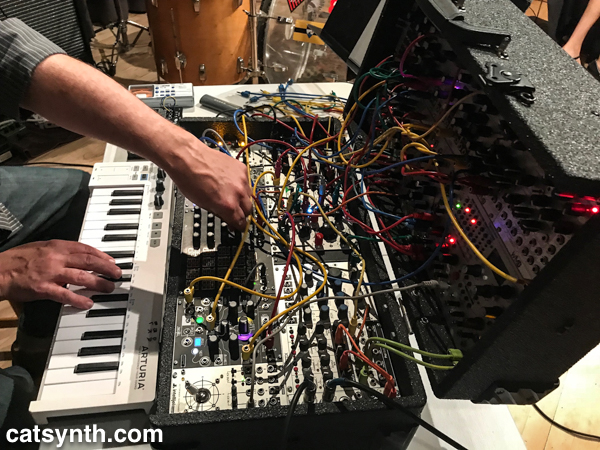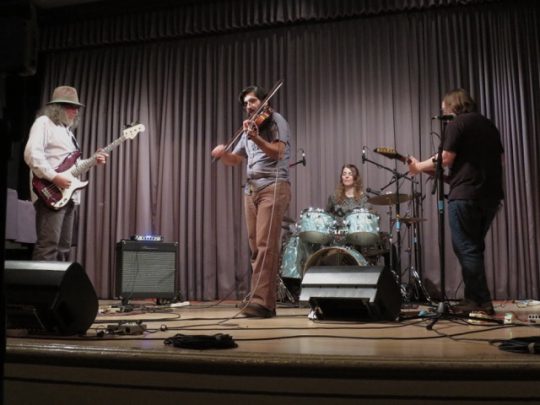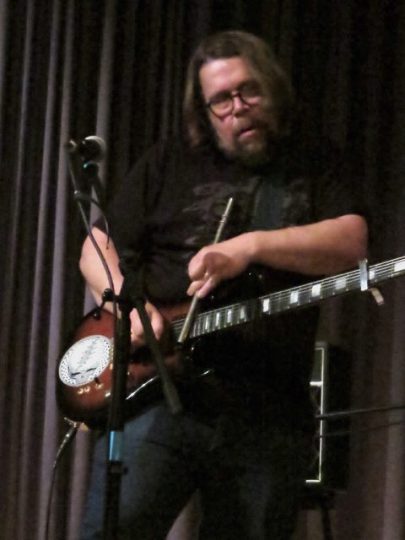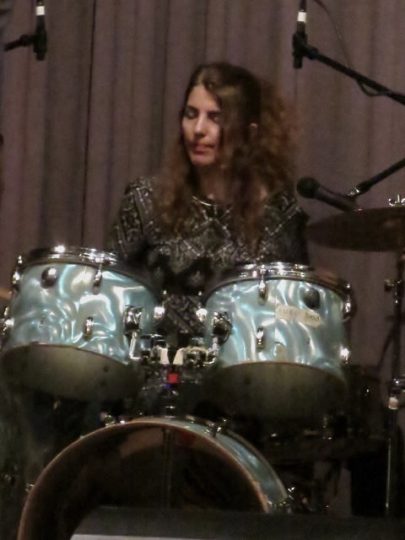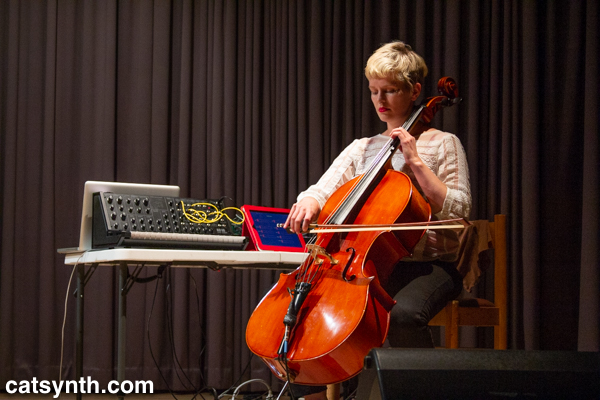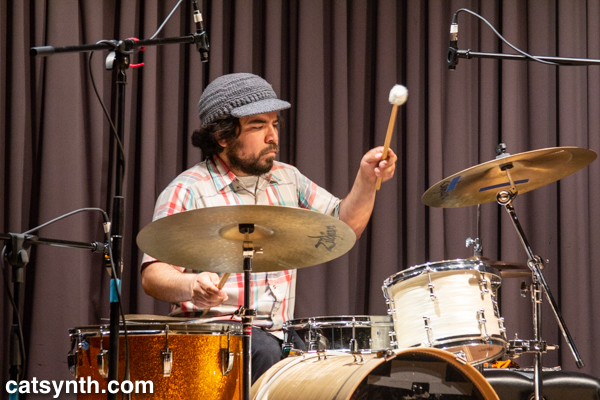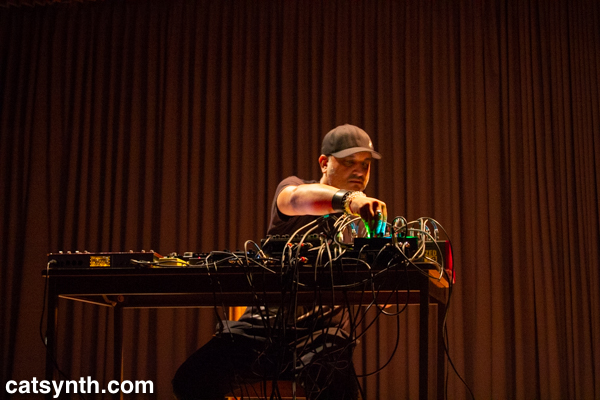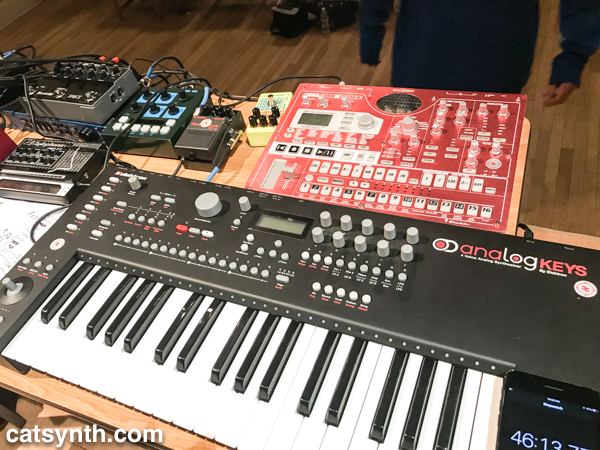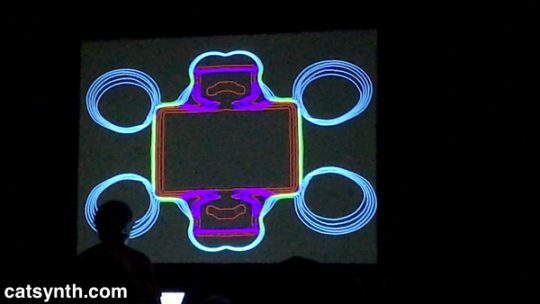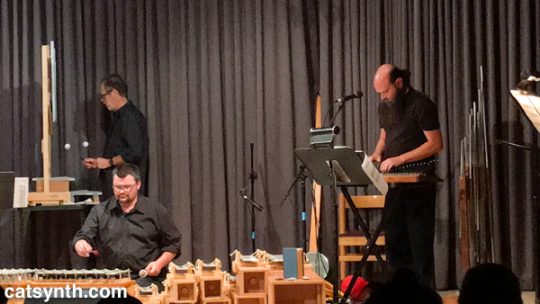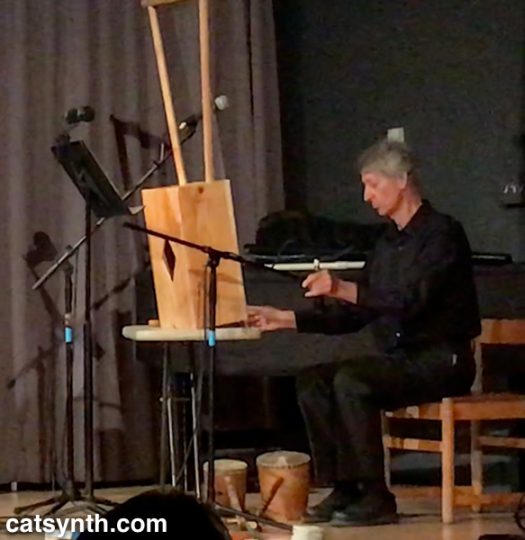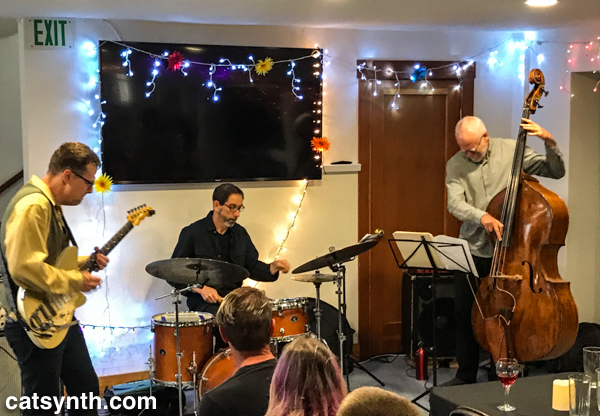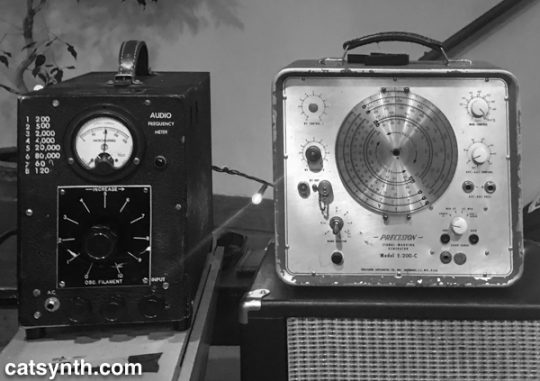It’s been a little over a week since the 2019 Outsound New Music Summit and it seems a good time to look back over all five nights of adventurous musical programming. If you haven’t already seen our summary video with highlights from all ten acts, please check it out.
The concert series kicked off with a performance by the duo B Experimental Band, a large project led by Lisa Mezzacappa (bass) and Jason Levis (drums). They have been performing as a duo for a long time, taking on different challenges as their musical relationship has evolved. The latest is bringing their improvisational focus to a large group, i.e., maintaining spontaneity and musicality of improvisation while herding cats.

What I most noticed about this set was how sparse and spacious it was. In the first piece, space played an important visual as well as musical role, with different pairs of performers scattered around the concert hall. And towards the end, the full group thinned out to a single solo line from Polly Moller Springhorn on flute. The complete ensemble also included Bruce Ackley, Randy McKean, Cory Wright, and Joshua Marshall on woodwinds; Theo Padouvas and Rob Ewing on brass; and Gabby Fluke-Mogul (violin), Murray Campbell (octave violin), Shanna Sordahl (cello), and Kjell Nordeson on percussion.
By contrast, the second set featuring saxophone quartet Social Stutter was densely packed with rich harmonies and melodies. Composer and bandleader Beth Schenck makes the quartet – which also includes Phillip Greenlief, Cory Wright, and Casey Knudsen – function as a single instrument with some exquisitely beautiful chords and melodic lines. There was also space for each of the members to shine individually, with Knudsen’s fast runs, Greenlief’s unique timbres and keywork, and Wright solidly holding down the foundation on baritone sax. I was quite taken by this performance and now inspired to write my own compositions for saxophone quartet.
We always aim for a diversity of styles of music and instrumentation throughout the week, loosely categorized into nightly themes. For example, both of the bands that could be characterized as “rock music” were on the same night, but the two groups were still quite contrasting. Gentleman Surfer, a trio featuring Jon Bafus (drums), Barry McDaniel (guitar), and Zack Bissell (synthesizers) delivered a hard-driving set – my favorite moments were those where all three played unison syncopated rhythms complete with silences that were as intense as the sounds.
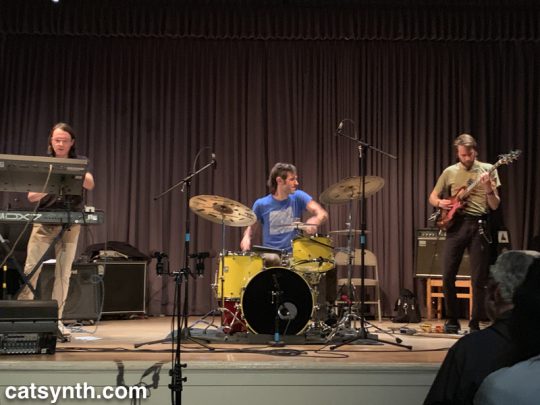
By contrast, Vegan Butcher’s set had a more plaintive, cerebral quality, due in large part to composer and bandleader John Shiurba’s “January Scale” and lyrics taken from his dream state just before waking up. The scale removes C-sharp, A-sharp, and F-sharp from the available twelve tones. This provides some interesting musical challenges. For example, a song centered in the “key” of F would have to avoid B-flat (A-sharp), and some keys like D become challenging indeed! The selection of chords to work around these gives the band’s music the plaintive sound. Their final song was particularly memorable, especially the section where rhythmic chords undergird the lyrics “I’m coming down from my stilts now, baby!” I found myself singing that for days afterward.
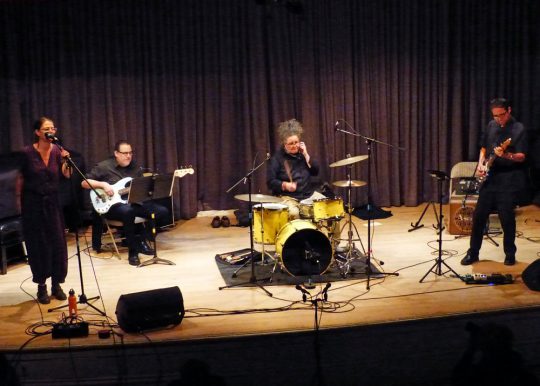
The next night again featured two contrasting sets. First was a very spare improvisation featuring Francis Wong on saxophone and Lenora Lee on dance/movement. Wong and Lee are longtime collaborators and have been working on both improvised and larger-scale compositions for two decades.
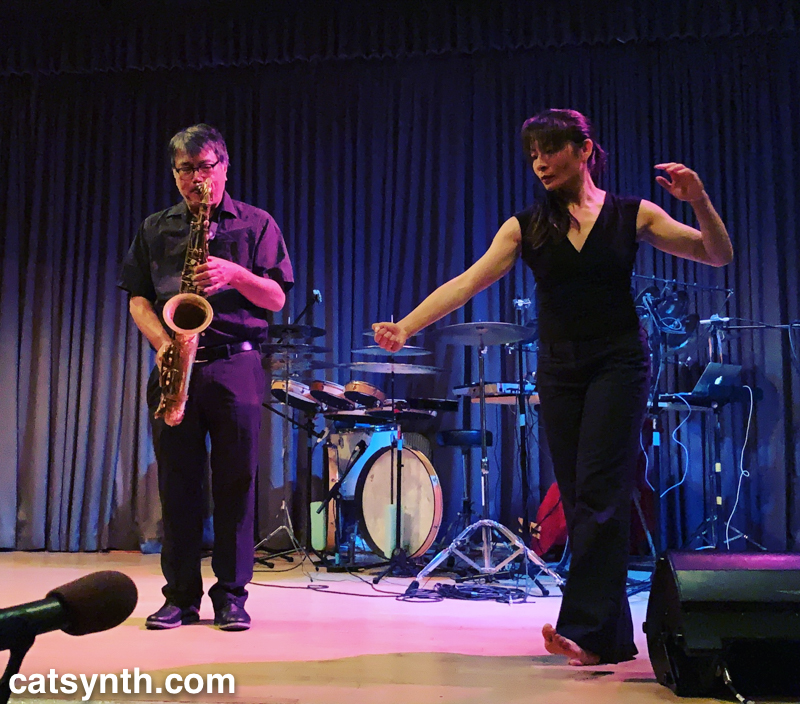
This performance, which made use of the space around the hall as well as the stage, was extraordinarily subtle and quiet as both the sound and movement bounced off the silent space – but at the same time forceful in the message it delivered, decrying all forms of violence and discrimination against immigrants and refugees from the Chinese Exclusion Act and the internment center on Angel Island to the images of mistreated children out our southern border today.
As with duo B and Social Stutter, the sparse nature of Wong and Lee’s performance was in sharp contrast to the lush landscapes of Andrea Centazzo’s solo set, with live percussion – drums, gongs, and his signature stacks of cymbals – set against both live and recorded electronics.
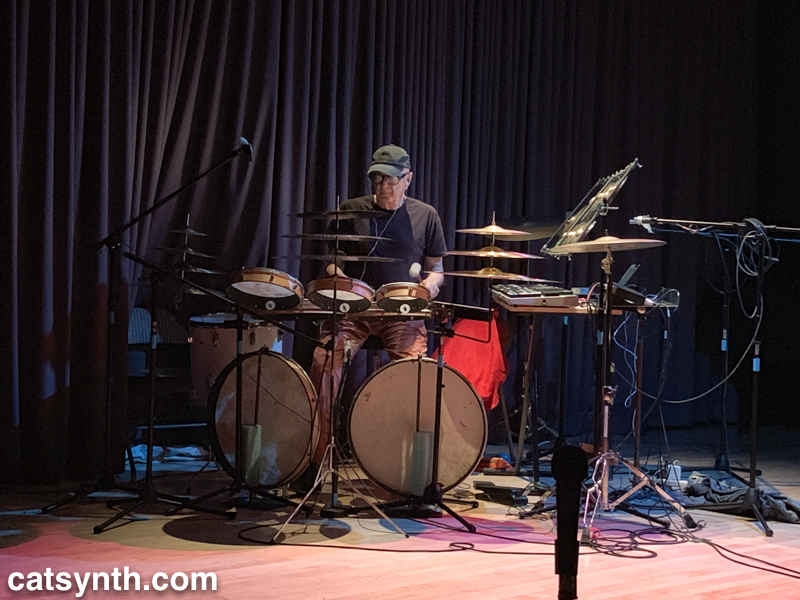
Centazzo’s solo performances often involve multimedia projections with the music. Sadly, this was not able to happen for this concert, but one could still “hear the images” of nature and remote places in his sounds, from the initial thundering drums to the gong array set against what sounded like singing monks.
The next night brought Polly Moller Springhorn’s much-anticipated Tomography Fortunae to the Outsound stage, or more specifically to the floor in the middle of the hall as the audience looked on from the edges. Her composition combines a variety of sounds with ritualistic movement and concept, all codified in a graphic score. The most unique element was the fact that all performers had to be named “Tom.” This comes from a longstanding observation that many of the musicians in the Bay Area new-music scene happen to be named Tom (or Matt, or David). The Toms on this occasion were Tom Djll, Tom Dimuzio, Tom Duff, Tom Dambly, Tom Nunn, Tom Scandura, and Tom Weeks.
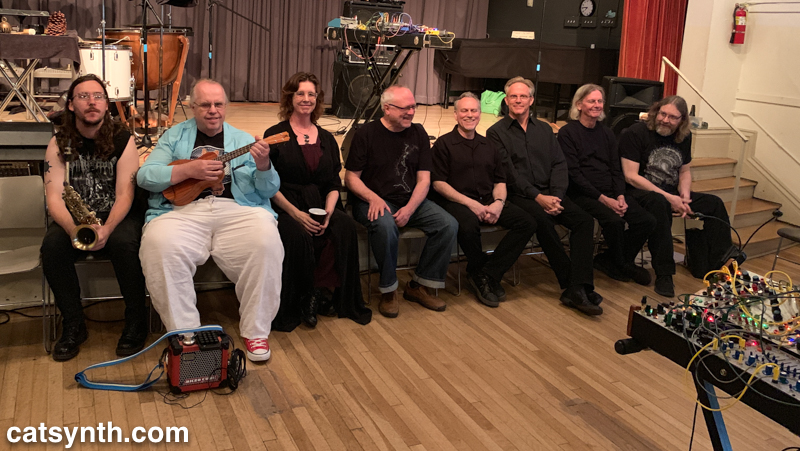
The piece unfolded as a series of three movements, each with more elaborate patterns of motion, ritualistic drawings, and numerical interplace. Most of the music was improvised within that framework, often bringing together pairs or trios of Toms for humorous interplay leading a loud and raucous finale with everyone playing. The whole experience was fascinating and fun.
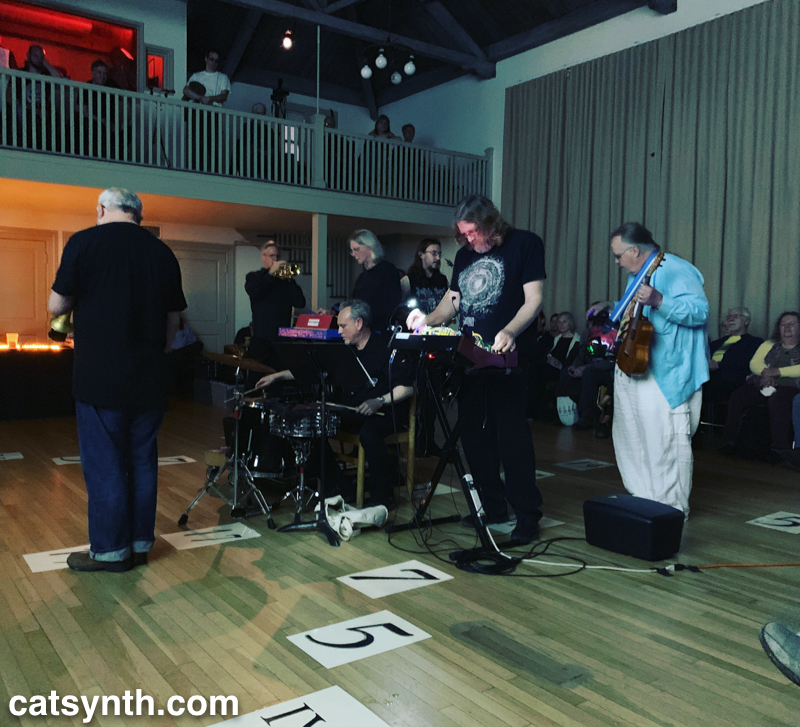
The next set brought together percussionist William Winant with Zachary James Watkins on guitar and electronics. The two had performed together before, but I still did not know what to expect. The set opened with Winant on pine cone and drum, with Watkins gradually building up high-pitched noisy sounds to fill the spaces in between. The guitar soon emerged with stronger electronic sounds as Winant shifted to his gongs and metal percussion.
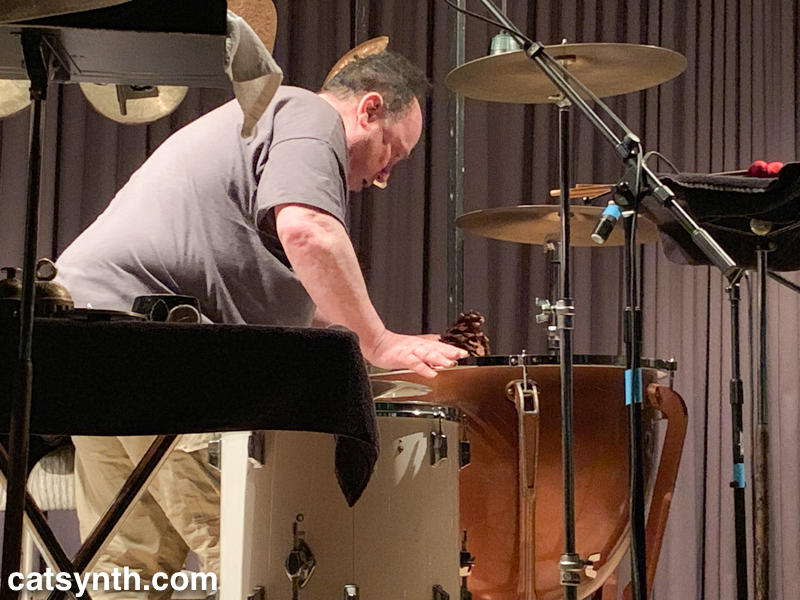
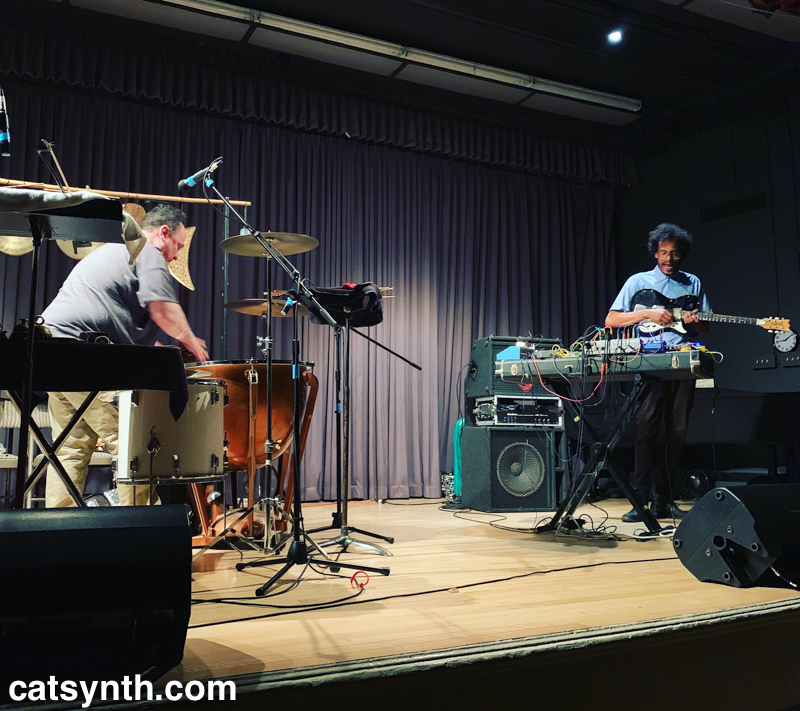
The sounds are fascinating but quite loud (especially for those of us who have maintained our high-frequency hearing) – and this was perhaps the most challenging moment of the entire festival. But things settled down again into a cloud of sound mixing percussion and electronics where the two became entangled.
The final night brought two veterans of the summit and of experimental jazz to the stage. Rent Romus (also the executive director of Outsound and the festival) teamed up with fellow woodwind multi-instrumentalist Keith Kelly for Deciduous, a set that unfolded as a collection of short stories, complete with characters, magic, and mischief. They were joined by Nava Dunkelman on percussion, Heikki Koskinen on e-trumpet, Gabby Fluke-Mogul on violin and Lisa Mezzacappa on bass.
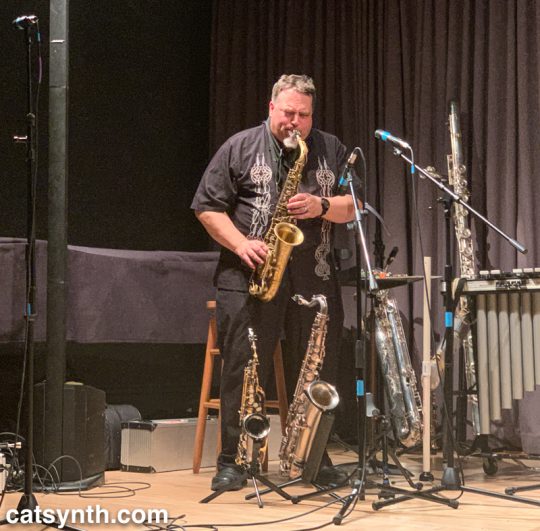
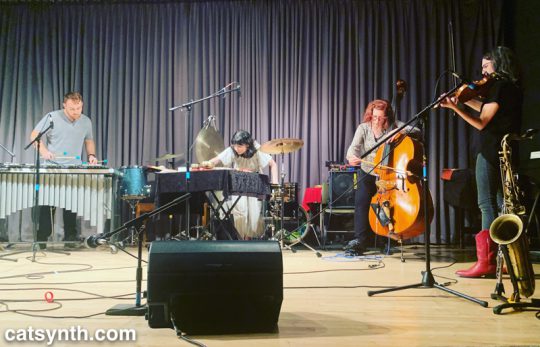
The final set brought back Vinny Golia and his wild collection of wind instruments to the Outsound Stage. In addition the more conventional baritone saxophone and bass clarinet, he also had a contrabass flute, a sopranino saxophone, and a rare G Mezzo-Soprano saxophone (which he describes in our preview video).
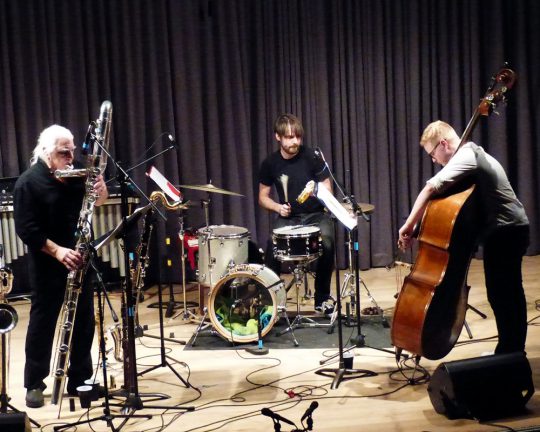
Golia was joined by Miller Wren on bass and Clint Dodson (drums). Originally, our friend Steve Adams was going to join them on saxophones but was unfortunately unable to make it for medical reasons. Fortunately, he appears to be much better and back to performing since then, and we wish him the best.
It’s particularly interesting to be present all nights and hear how the different artists and styles of music follow one another on the same stage. And I am glad to have been a part of it again this year both as a listener and part of the organizing committee.

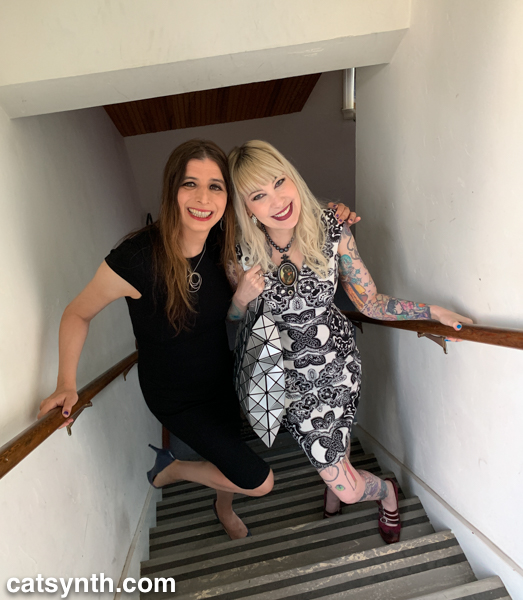
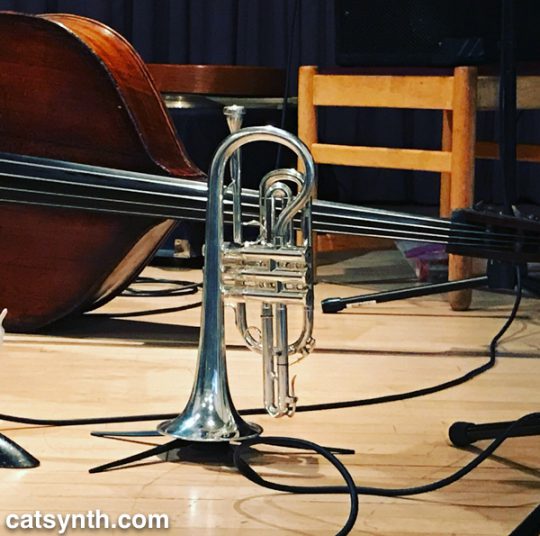
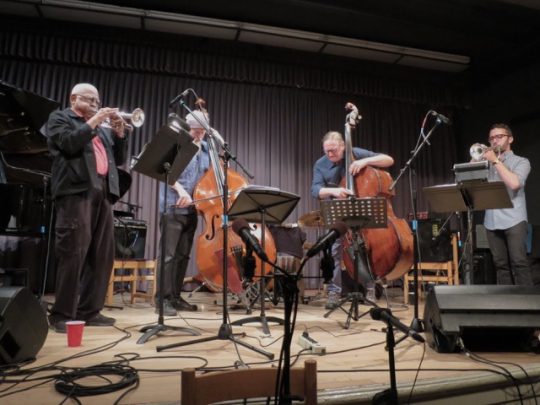
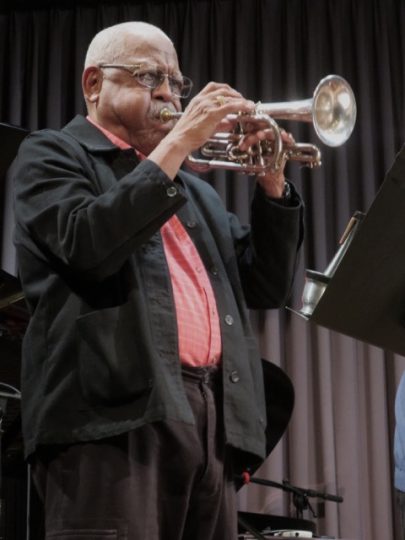
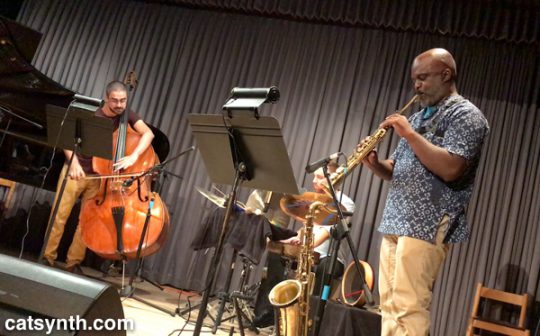
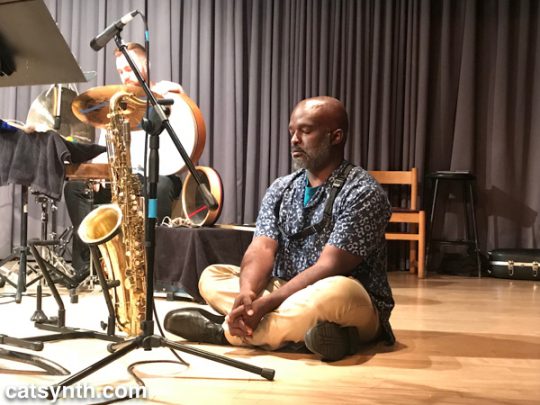
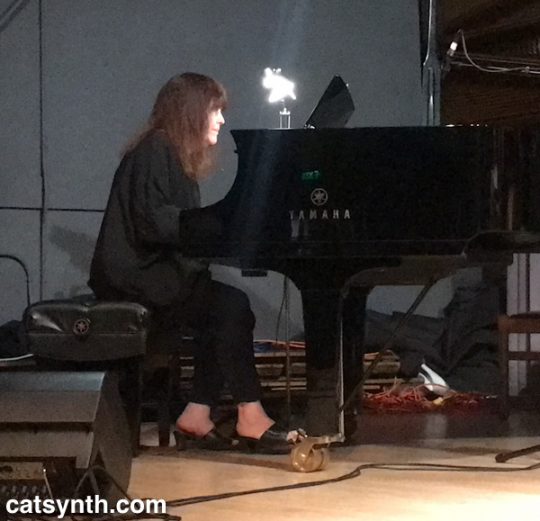
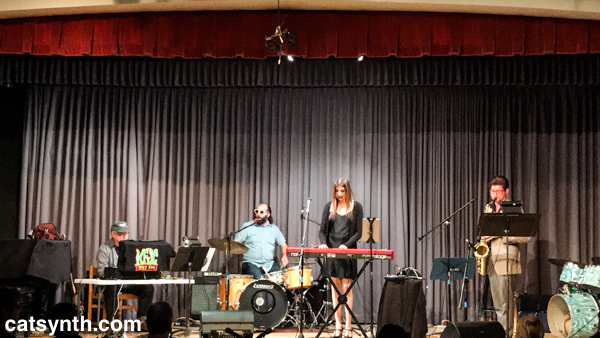
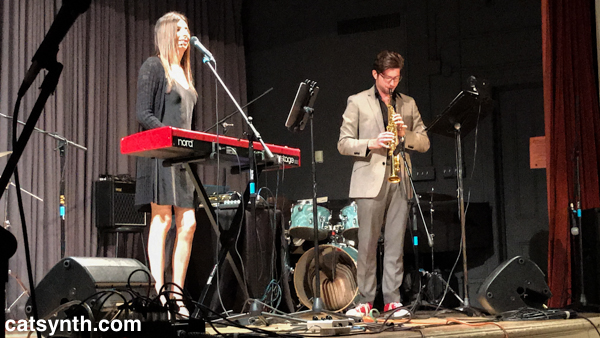 We got off to a somewhat shaky start with White Wine, but we settled down quickly as we headed into the improvisation section. From that point on, things only got better with Marlon Brando and North Berkeley BART (which is always a local crowd pleaser). Rambutan was a lot of fun, including the funky 7/4 jam and the call-and-response chant with the audience. Mark held up the metric foundation, working with both me and Tom who took turns on the bass roll. Tom also got some great sounds in his solos, as did Josh who moved easily between growls and mellifluous melodic runs.
We got off to a somewhat shaky start with White Wine, but we settled down quickly as we headed into the improvisation section. From that point on, things only got better with Marlon Brando and North Berkeley BART (which is always a local crowd pleaser). Rambutan was a lot of fun, including the funky 7/4 jam and the call-and-response chant with the audience. Mark held up the metric foundation, working with both me and Tom who took turns on the bass roll. Tom also got some great sounds in his solos, as did Josh who moved easily between growls and mellifluous melodic runs.